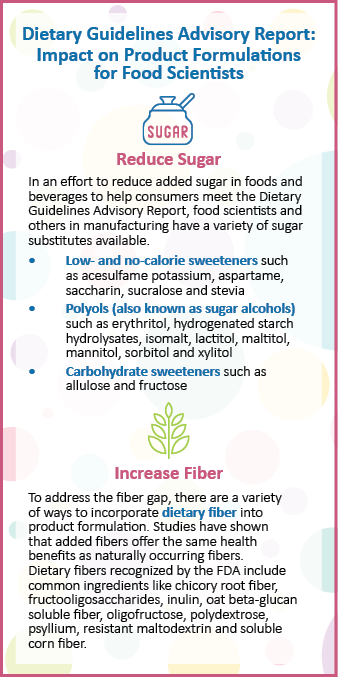

July 15, 2020 — Among other items, today’s published Scientific Report from the Dietary Guidelines Committee from the U.S. Department of Health and Human Services (HHS) and the U.S. Department of Agriculture (USDA) included sections on added sugars, low and no calorie sweeteners (LNCS) and fiber intake. As a basis for the guidelines to be published later in the year, the purpose of the scientific report is to summarize and review evidence and recommendations, which are then submitted to USDA and HHS.
Since 1980, the Dietary Guidelines for Americans (Dietary Guidelines) has been at the core of Federal nutrition programs and valuable resource for health professionals nationwide. Providing food-based recommendations to promote health, help prevent diet-related chronic diseases, and meet nutrient needs, they are published jointly by the U.S. Departments of Agriculture (USDA) and Health and Human Services (HHS) every five years.
The current edition — the 2015-2020 Dietary Guidelines — is the 8th edition until the 2020-2025 Dietary Guidelines is released which is planned to include more comprehensive guidance for infants and toddlers and for pregnant women, with plans to take a life stage approach. To learn more about the Dietary Guidelines and work under way, please go to DietaryGuidelines.gov, where you also can sign up for email updates.